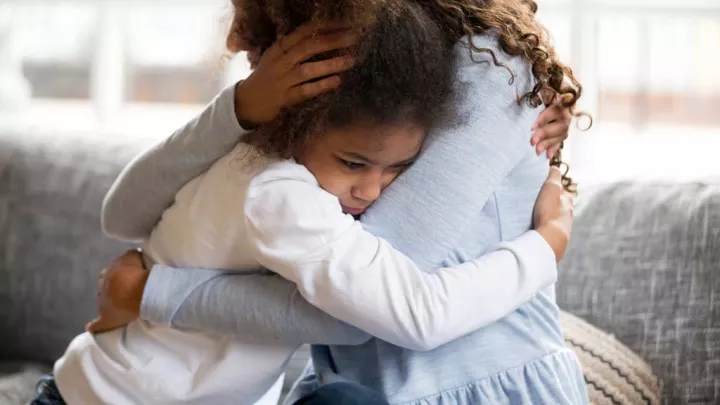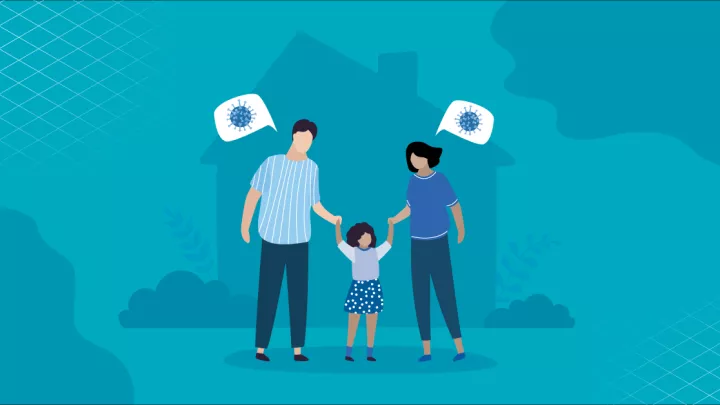
How to Help Your Child Make Friends With a Child Who Has Autism
As a parent, you want your child to be inclusive and accepting of the people they encounter—including those with autism spectrum disorder. Approximately 95% of children with disabilities enroll in regular schools. That means your child is likely to meet someone with autism in class or extracurricular activities, whether they realize it or not.
“Given the rates of autism diagnosis and our ability to identify it, most kids will meet an autistic child at some point during their school-aged years,” says Taryn Liu, DO, pediatric neurologist at Children’s Hospital Los Angeles. But talking to children about classmates who communicate differently can be challenging. Autism involves a wide range of differences that may leave your non-autistic child feeling uncomfortable, confused and full of questions.
“Sometimes those differences will be obvious, and sometimes they will not,” Dr. Liu says. “But when non-autistic children make friends with someone with autism, it can help them understand that we all have different ways of existing in the world. Parents can help them navigate those differences and foster meaningful relationships.”
Explaining autism to your kids
Having basic knowledge about autism can go a long way in helping your child understand and interact with an autistic classmate. Let your child know that autism is:
- A condition that affects how the brain works
- Described as differences in the way someone communicates or interacts with others
- Not the same in everyone—no two people with autism will behave in the same way
- Something people are born with, not a disease or illness that can be “caught”
“Autism is not a look, or a movement,” Dr. Liu says. “The core of autism is social and emotional communication difficulties and associated restricted interests, sensitivities, and repetitive patterns of behavior. Someone with autism may struggle to understand others’ emotions, facial expressions and jokes. Autism may make it hard for a child to create and maintain friendships, but kids with autism love to make friends. They just might do it in different ways.”
Fostering your child’s friendship with a child who has autism
There are ways to support your child’s relationship with an autistic peer before, during and after that friendship begins. It’s never too early or too late to get started.
Take these steps with your preschooler or elementary school-aged child to encourage inclusive friendships:
Before your child meets someone with autism
Helping your child appreciate differences begins long before they make their first autistic friend. At a young age, you can start to:
- Normalize differences: Children learn by watching you, so model kind behavior and celebrate differences while reading books or watching shows together. Talking about how people are unique normalizes those differences and makes being inclusive feel natural. Reinforce the idea that all humans have strengths and weaknesses.
- Teach your child about all forms of communication: Spoken language is just one way we communicate. We also use gestures, eye contact, facial expressions and physical actions to show our feelings. Point out non-autistic family members and friends who communicate with their hands, wink often or give a lot of hugs. Ask your child how babies communicate to show what they need or want.
“It’s OK for your child to feel uncomfortable initially around people who seem different,” Dr. Liu says. “But the takeaway is that while some people might have obvious differences at first, as humans, we have much more in common than we realize. The differences make our world special and interesting.”
As your child tries to befriend someone with autism
If your child has a classmate with autism, help them understand the best ways to initiate friendship and what to expect.
Dr. Liu recommends sharing this guidance with your non-autistic child:
- Offer friendship: Don’t shy away from an autistic classmate. Instead, approach them like anyone else. Ask them what they like to do, say hello, compliment them or invite them to play. Not all children with autism will respond to your efforts, but just saying hi and offering your friendship will go a long way toward helping someone feel welcome.
- Don’t have any expectations: People with autism communicate differently. They may be really shy or extra excited to see you. They might look away to feel more comfortable, or get close to you to show their happiness. Your autistic classmate may even hurt your feelings at first—they may walk away without a word or say something rude. Try not to take these actions personally. They likely don’t understand how their actions make others feel.
- Tell your friend how you feel: Children with autism care about their friends. But sometimes they might say things without filtering how they say it. This may unintentionally hurt your feelings or make you uncomfortable. If that happens, try to understand that your autistic friend may not realize how their actions affect you. It’s OK for you to calmly and clearly tell them how you feel. You can say, “You probably didn’t do it on purpose, but you really upset me when you…” Your friend may not look at you when you talk to them, but they hear you. If your classmate continues to upset you, it’s okay to walk away, play somewhere else or talk to your teacher about it.
- Look for what you have in common: Even though you may only see the differences first, you probably have something in common with your autistic classmate—you just need to discover it. Notice what they play with or ask them what they like to do. People with autism often know a lot about a specific topic and may be able to teach you something.
- Consider playing next to, instead of with, your friend: Some children with autism find it easier to play near their friends (parallel play). They’d rather not engage in games that require back-and-forth interactions. Parallel play allows autistic children to have boundaries and choose when and when not to talk. Examples of parallel play include building with blocks near each other, coloring side by side, and playing with cars or action figures simultaneously, but not pretending together.
- Recognize signs of frustration: If an autistic classmate seems irritated, they may feel frustrated, uncomfortable or misunderstood. When that happens, step back and say, “It’s OK.” Try to figure out why your friend might be frustrated. If you think something you did or said made them uncomfortable, say, “It’s OK. I’m not going to do that anymore.”
“Every friendship your child has is unique and brings something to the table,” Dr Liu says. “The best thing your child can do is be kind and try to understand their autistic friend without expecting how they will respond back.”
Once your child has a friend with autism
An ongoing friendship between your child and an autistic classmate may include playdates, birthday parties and other get-togethers outside of school. If you’ll be hosting the children, Dr. Liu suggests:
- Planning ahead: Find out what makes your child’s friend comfortable. What snacks do they like? What are their favorite toys and activities? Planning helps ensure both kids have a positive experience.
- Prepping your child: Explain that their friend may get overwhelmed and need space or time alone. Remind them that your family tries to make guests comfortable and doesn’t mention things guests do differently.
- Asking questions: If your child’s autistic friend is verbal, ask your guest what they want to do, what they like to eat, or if they need a break. For nonverbal children, reach out to the parent. Ask them about their child’s tendencies and how often they may need a break from play.
“Parents of children with autism typically enjoy being able to talk about their child, including what makes them great and what they find challenging,” Dr. Liu says. “It’s always better to ask questions than assume you understand their child.”


